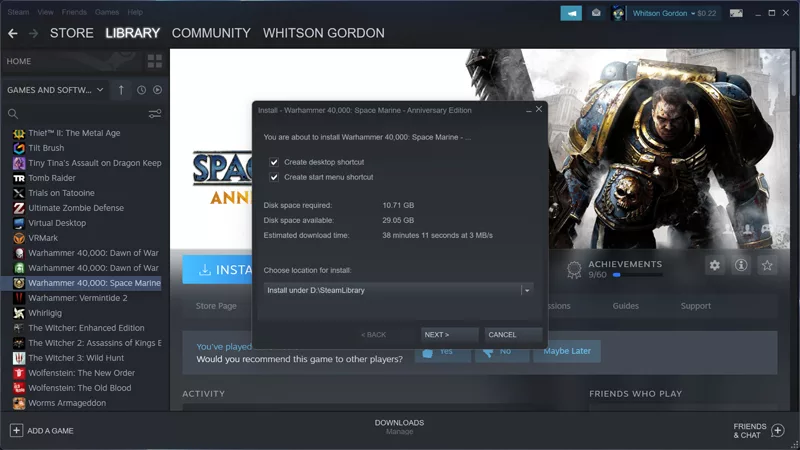Step into the next frontiers of gaming with DirectX 12 Ultimate-ready ROG hardware
If you’re a PC gamer, you’re already familiar with Microsoft’s DirectX application programming interface (API), even if you don’t know it by name. You see and hear its output almost every time you play your favorite games. DirectX is how the vast majority of game developers make their titles run on the Windows platform. It’s a set of tools that are constantly evolving and expanding as game developers explore new ways to push the envelope with ever-larger worlds and ever-more-realistic graphics.
An API like DirectX isn’t just of interest to software developers—it also matters to the engineers who build graphics processing units, or GPUs. That’s because an API is a bit like a contract between the game software, the Windows graphics driver, and ultimately the hardware chip that accelerates the rendering of 3D graphics. It defines the things that software can ask a GPU to do and what requests the chip itself can fulfill. Because of this relationship, companies like NVIDIA, AMD, and Intel work closely with Microsoft on the development of future versions of the DirectX API and the capabilities it includes.

The ROG Strix GeForce RTX 3090, a DirectX 12 Ultimate-compliant graphics card from NVIDIA
As the tools offered by DirectX evolve, it’s important for PC gamers and PC builders to be aware of the DirectX capabilities, divided between major versions and finer-grained feature levels, that their PCs’ graphics cards support. Not every GPU supports every major DirectX version or feature level, so not every game can run on every GPU with all of its eye candy turned on. Only some of the latest graphics cards support the latest DirectX versions, the highest feature levels, and the latest techniques that game developers can use to enhance the immersiveness and realism of their titles.
DirectX 12 Ultimate, the latest feature level of DirectX, expands the exciting DirectX 12 API in four new ways that open up new methods of programming games. Whether you want better, more lifelike image quality or better performance, DirectX 12 Ultimate-compliant GPUs are the most advanced, most flexible ever made. To help you understand why you should look for a DirectX 12 Ultimate GPU in your next ROG laptop, desktop, or in your DIY PC parts list, let’s dive into those four new features to briefly see how each one will shape the future of gaming.
DirectX Raytracing brings light to life
Let’s not kid ourselves here. You’ve probably seen dozens of enticing screenshots of the stunning effects that real-time raytracing enables in games over the past couple of years. Instead of merely emulating how light behaves in the real world, raytracing realistically simulates that behavior, leading to incredibly lifelike images. If you haven’t wiped the drool away from your mouth and upgraded already, you’ll want to look for a system with a DirectX 12 Ultimate graphics card, as it indicates support for DirectX Raytracing, or DXR.

DXR is how programmers tell the graphics card to compute and display the results of those effects, and DirectX 12 Ultimate indicates that a graphics card can accelerate all of the latest DXR techniques. Only DirectX 12 Ultimate graphics cards are capable of the best raytraced lighting like reflections, shadows, global illumination, and more. Once you lay eyes on a game that supports real-time ray tracing via DXR, you’ll never want to go without the capability again.
Variable-rate shading works hardest only where it’s needed
As display resolutions climb ever higher and VR headsets demand both high resolutions and high frame rates, developers have explored techniques to allocate GPU resources more efficiently than the brute-force method of re-shading, or re-computing, the color of every single pixel for every single frame. One of these techniques is called variable-rate shading, or VRS. Variable-rate shading allows developers to define regions of pixels in a frame of animation that don’t need to be recalculated as often as others. DirectX 12 Ultimate hardware has the fullest range of VRS capabilities for developers to take advantage of.

DiRT 5, one of the first games to support variable-rate shading. Image courtesy Gamesplanet
For an example of how variable-rate shading might be used, imagine you’re piloting a car in a racing game. You would certainly notice low-fidelity rendering of your car’s paintwork and mesh grilles, since your eyes are often focused on that region of the screen. You want that region to be shaded at the highest available rate. In contrast, you’d hardly miss pixel-perfect fidelity in the corners of the screen, where moving objects are being obscured by the motion blur inherent to simulated movement at hundreds of miles per hour. They could stand to be shaded at a lower rate. In this way, a developer can put GPU power where it’s needed, increasing performance without visible effects on fidelity.
Mesh shaders and sampler feedback give developers more control than ever
Other DirectX 12 Ultimate features are a bit more esoteric, but they still open up intriguing possibilities for developers that will most likely influence future games. DirectX 12 Ultimate mesh shaders give developers greater power over how the graphics card processes geometry - a fancy name for the groups of triangles that make up objects in the 3D game world. Mesh shaders allow developers to process these triangles with greater flexibility and precision than in past versions of the DirectX API.
Finally, DirectX 12 Ultimate sampler feedback gives developers powerful insights into the way their programs behave with regard to texturing, or the technique of mapping a 2D image—a texture—onto a simulated 3D object. In complex scenes, sampler feedback can quickly tell the program where in a 2D texture and at what mip level (or texture size) a sampler would have operated without actually performing the hard work of texture mapping operations, allowing a game to use this information to decide both what information to load and what level of detail it loads at for upcoming frames. That more informed decision making makes for more efficient and precise use of graphics processing resources, potentially leading to higher image quality and better performance.
ROG PCs and graphics cards are ready for DirectX 12 Ultimate
If you’re shopping for a new gaming laptop, desktop, or graphics card with DirectX 12 Ultimate support, you don’t have to look far in the ROG lineup to get ready.
GeForce RTX 20-series GPUs power many members of our 2020 family of gaming laptops. You’ll want to look for models that include GeForce RTX 2060 or better GPUs across the ROG Zephyrus G, Zephyrus M, Zephyrus S, and Zephyrus Duo series, plus esports-focused models from the ROG Strix SCAR 15 and 17 series.

The ROG Zephyrus G14 gaming notebook, which can be specced with a DirectX 12 Ultimate-compliant NVIDIA GeForce RTX 2060 GPU
The ROG Zephyrus G14 puts GeForce RTX 2060 graphics in an impressively small and light form factor, while the Zephyrus Duo 15 features up to GeForce RTX 2080 SUPER graphics alongside a unique tilting ROG ScreenPad Plus secondary display. For unbridled performance, the ROG SCAR 17 pairs GeForce RTX 2080 SUPER graphics with a 300Hz display and eight cores of Intel Core i9-10980HK CPU power.

The ROG Strix LC Radeon RX 6800 XT, a DirectX 12 Ultimate-compliant graphics card from AMD
If you prefer to build or upgrade your own desktop PC, ROG Strix versions of NVIDIA GeForce RTX 30-series graphics cards are available now, with more to come. AMD’s just-released Radeon RX 6000 series of graphics cards also provides DirectX 12 Ultimate support, and we’ve given the Radeon RX 6800 XT and RX 6800 the ROG Strix treatment for high performance and quiet running.
For more information on how to get ready for the latest crop of games using DirectX 12 Ultimate, check out this helpful blog post from Microsoft. You can also learn more about DirectX 12 Ultimate features through Microsoft’s introductory post on the new feature set. Once you have a DirectX 12 Ultimate graphics card at hand and Windows 10 on your PC, the hardest decision you’ll have to make is which compatible game to play first.
Autor
Popular Post

How to boost gaming performance on the ROG Ally

15 tips & shortcuts to set up and optimize your ROG Ally

ROG Elite - program nagród już dostępny w Polsce! Zgarniaj unikalne prezenty od Republiki

How to overclock your graphics card with GPU Tweak III

How to Install Games to an SD Card on the ROG Ally
Najnowsze Artykuły

Surviving Frostpunk 2’s frozen hellscape
Frostpunk 2 is a bold sequel that pushes the franchise into uncharted, exciting territory.

ROG teams up with iconic voice actors in cheeky new video
The ROG travel agency is open for business.

The best relaxing, casual games to play on the ROG Ally
Need a break from the fast paced, heart-racing games you usually play? Cozy up on the couch with your ROG Ally and these relaxing games.

The best ROG Ally games to play in short bursts
Sometimes you have a few hours to game, sometimes you have 10-15 minutes to squeeze something in. Handhelds like the ROG Ally are perfect for those quick sessions.

ROG and Opera join forces for a special edition of Opera GX, the browser for gamers
The Opera GX ROG Edition browser is loaded with game-changing features like ASUS Aura Sync integration.

Race after your dreams with the power of the ROG Strix SCAR 16 and SCAR 18
Discover the amazing true story of a gamer turned pro racer in the new movie Gran Turismo.